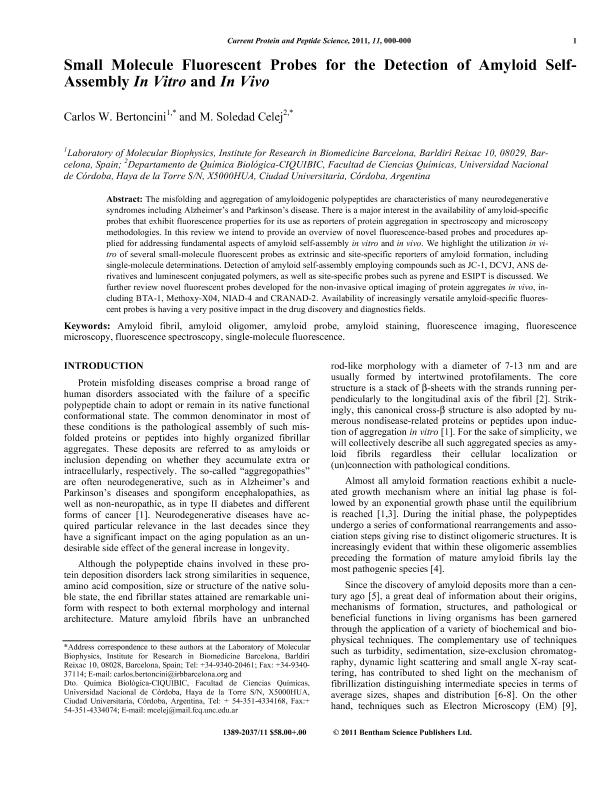Artículo
Small molecule fluorescent probes for the detection of amyloid self-assembly in vitro and in vivo
Fecha de publicación:
05/2011
Editorial:
Bentham Science Publishers
Revista:
Current Protein and Peptide Science
ISSN:
1389-2037
Idioma:
Inglés
Tipo de recurso:
Artículo publicado
Clasificación temática:
Resumen
The misfolding and aggregation of amyloidogenic polypeptides are characteristics of many neurodegenerative syndromes including Alzheimer´s and Parkinson´s disease. There is a major interest in the availability of amyloid-specific probes that exhibit fluorescence properties for its use as reporters of protein aggregation in spectroscopy and microscopy methodologies. In this review we intend to provide an overview of novel fluorescence-based probes and procedures applied for addressing fundamental aspects of amyloid self-assembly in vitro and in vivo. We highlight the utilization in vitro of several small-molecule fluorescent probes as extrinsic and site-specific reporters of amyloid formation, including single-molecule determinations. Detection of amyloid self-assembly employing compounds such as JC-1, DCVJ, ANS derivatives and luminescent conjugated polymers, as well as site-specific probes such as pyrene and ESIPT is discussed. We further review novel fluorescent probes developed for the non-invasive optical imaging of protein aggregates in vivo, including BTA-1, Methoxy-X04, NIAD-4 and CRANAD-2. Availability of increasingly versatile amyloid-specific fluorescent probes is having a very positive impact in the drug discovery and diagnostics fields.
Archivos asociados
Licencia
Identificadores
Colecciones
Articulos(CIQUIBIC)
Articulos de CENTRO DE INVEST.EN QCA.BIOL.DE CORDOBA (P)
Articulos de CENTRO DE INVEST.EN QCA.BIOL.DE CORDOBA (P)
Citación
Bertoncini, Carlos Walter; Celej, Maria Soledad; Small molecule fluorescent probes for the detection of amyloid self-assembly in vitro and in vivo; Bentham Science Publishers; Current Protein and Peptide Science; 12; 3; 5-2011; 206-220
Compartir
Altmétricas




